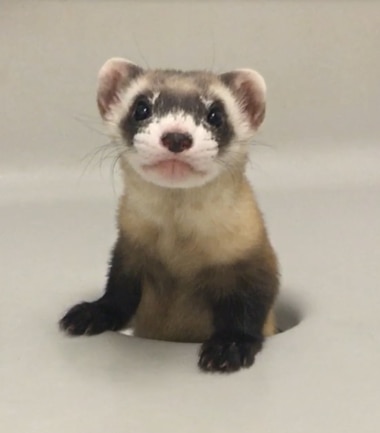Create a free profile to get unlimited access to exclusive videos, sweepstakes, and more!
Back from the dead? Cloned ferret offers hope for endangered species

Black-footed ferrets are critically endangered, with only about 800 individuals currently remaining. A bit of good fortune, some foresight from conservationists, and death-defying laboratory science might spell a recovery for the species.
The U.S. Fish and Wildlife Service, in addition to more typical conservation efforts, has succeeded in cloning a black-footed ferret. This marks the first time a native endangered species has been cloned in the United States, and could bring some much-needed genetic diversity to the population.
Black-footed ferrets have called North America home for 100,000 years, evolving alongside prairie dogs, their primary food source. Unfortunately, like many native species, they suffered as a consequence of expansion after European settlers colonized the continent.
Development reduced their natural habitat, and targeted hunting of prairie dog populations decreased their food supply.
A small wild population was discovered in South Dakota in 1964. Nine individuals were captured, and a captive breeding program was initiated. By 1974 the wild population had disappeared, and five years later, the last of the captive ferrets died, having never bred successfully. It would have spelled a true end for the species if not for another pocket population discovered two years later by a Wyoming rancher.
By now wild populations, already frighteningly sparse, were threatened by Canine distemper and sylvatic (bubonic) plague. Twenty-four individuals were captured from the area around the Wyoming ranch for another breeding program but six died almost immediately from disease. All black-footed ferrets alive today are descended from seven of those original 18 animals. As a result, the species is at risk of too-low genetic diversity, threatening their long-term survival.
“Cloning was used to further black-footed ferret conservation as it addresses two specific issues to recovering this species—genetic diversity and disease resistance,” Emma Roach, Public Affairs Specialist for the U.S. Fish and Wildlife Service told SYFY WIRE. “The unique situation of having a small number of founder animals combined with the threat of bubonic plague and the potential ability for genetic cloning technology to address these threats made black-footed ferrets a good fit for this technical solution.”
Cloning wouldn’t have been possible at all without some forward thinking nearly three decades ago. Willa, one of the wild specimens captured from Wyoming, has no living descendants, but members of the Wyoming Game & Fish department gathered a tissue sample and sent it to the San Diego’s Frozen Zoo, which currently holds samples of more than a 1,000 different species.
A review of Willa’s tissues revealed it had three times more unique variations than individuals in the current population, the reintroduction of which could add some much-needed variation to the black-footed ferret gene pool. If all goes well, Willa might not be the only deceased member of the species to make a comeback.
“Frozen tissues from one additional black-footed ferret collected from the original 18 may have viable genetic material for cloning,” Roach said.
The cloning was completed via somatic cell nuclear transfer, the same process used to clone Dolly, the sheep. The process involves removing the nucleus of a donor egg and replacing it with a nucleus from the animal to be cloned. Once the nuclear transfer was complete, the egg was implanted into a surrogate mother to carry. Finally, in December of 2020, more than 30 years after Willa died, her genetically identical daughter Elizabeth Ann was born.
For now, Elizabeth Ann and her surrogate mother are being housed separately from other breeding black-footed ferrets at the National Black-Footed Ferret Conservation Center. She has not, as yet, had any offspring, but the center has high hopes for her future.
“Since the successful cloning of Elizabeth Ann, efforts have been focused on monitoring her development. There are future plans to breed Elizabeth Ann sometime in the spring of 2022,” Roach said.
Currently, the Fish and Wildlife service is not engaged in cloning efforts of any other endangered species. The unique circumstances of black-footed ferrets made them an ideal test case, and this process may not be suitable for other species. Any other species would need to have suitable genetic material which varies from that available in the current population as well as an established breeding program. A lot has to go right in order for this to work. It makes sense for researchers to tread carefully.
With any luck, the near-future will include a whole host of ferret kits descended from genetically diverse clones. With even more luck, and the hard work of conservationists, the not-too-distant future won’t require the cloning of endangered species at all.



























